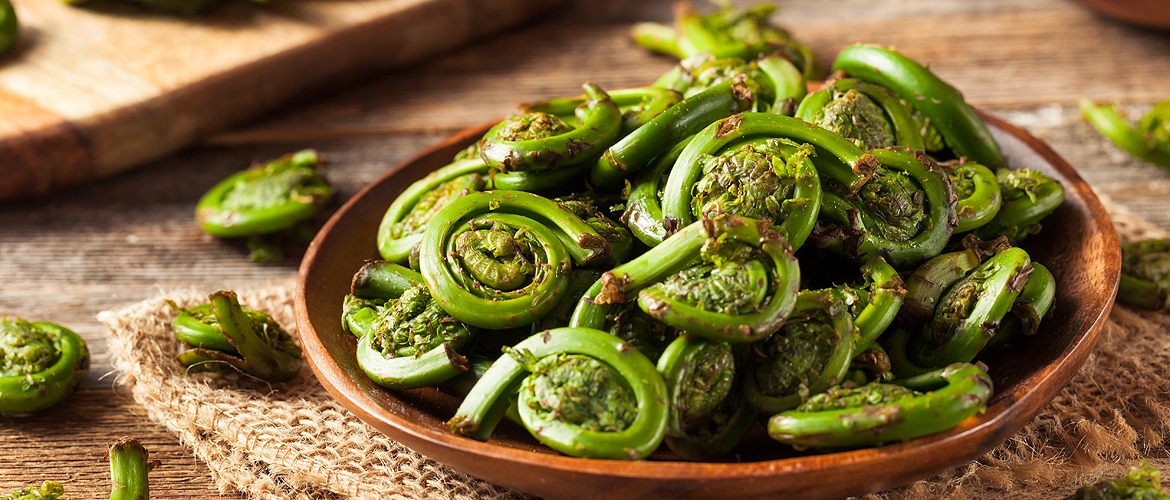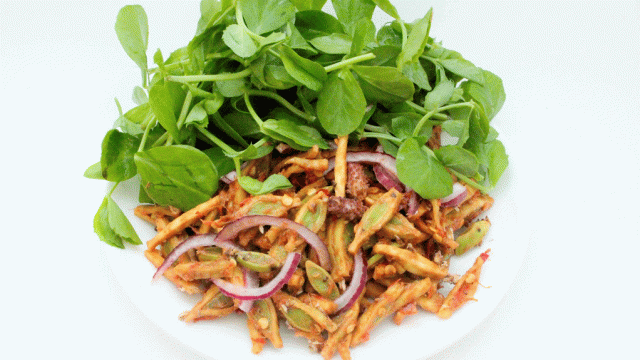Assamese cuisine is full of character. Cooking techniques include that of hills as well as plains, so
Omita Khar
Khar is banana peel’s ash extract and is similar to sodium bicarbonate. This is traditional Assamese dish made of young raw papaya. Khar gives the already aromatic papaya, a sweet aroma that I believe adds more to the taste.

Masor Tenga
Great for summer, this dish is made of fish and slices of dried mangosteen. In the absence of dried mangosteen, the dish can also be made with Kazi nimbu (a family of kaffir lime). This dish is light, perfect for summer time and a favourite among all Assamese communities.
Duck with Kumura (white gourd)
Locally called “haa“, duck is one of the most popular meats consumed by Assamese folks. White gourd is the choice ingredient because its natural aroma complements the duck. This dish is usually heavily spiced, but delicious nonetheless. This is a must-have.

Dhekia Xaak
This is fiddlehead fern. A vegetable commonly eaten in the hilly regions of India. Dhekia Xaak (pronounced as haak) is a sign of spring’s arrival. The Assamese folks love their dhekia, they like to cook it with tomatoes, dried shrimps, dried mangosteen or just a simple stir fry!
Kol-phool with Duck/Chicken/Fish
A personal favourite, banana flower or banana heart is a healthy food. Loaded with nutritional goodness, banana flower is also one of the super foods. In Assam, it is eaten mostly with finely chopped duck, chicken meat or fish. Banana flower is full of fibres, antioxidants, light on the stomach and is delicious!

Pani Hamuk
For the uninitiated ones, this dish would be something of a challenge. Pani hamuk, translated as water snails, when sourced from paddy field or clean flowing river/streams, taste great. A bit of a challenge because one needs to suck the meat out of the shell. Water snails cooked with pumpkin or potatoes (with pork and fermented beans in Nagaland) are as exotic as they come.

Alu/Bengena Pitika
This is one of the most popular side-dishes you’d find in an Assamese thali. Boiled mashed potatoes or roasted and mashed eggplant, mixed with raw mustard oil, finely chopped green chilies and onions—this dish is simple and a big hit at the same time.

Fish Cooked in Banana Leaf
This is a steamed dish. Tiny river fishes wrapped and steamed in banana leaf, and later garnished with chopped onion, coriander and fresh green chilies. This is one of the traditional Assamese way to prepare fish item.
Doi-Chira
This is mostly eaten during Bihu but one can eat this daily for breakfast too. Moist flattened rice mixed with curd, cream and jaggery is a local favourite. This is not a dessert, though it may sound like one. For the locals, doi-chira is an important traditional dish.
Pitha
Just like the aforementioned doi-chira, pitha occurs mostly during Bihu. Pitha is equivalent to other Indian dishes but so different and unique. Made either fried, toasted or just hand rolled, these sweet and savoury dishes are an essential part of Assamese tradition and culture.
cuisine
India
northeast food





